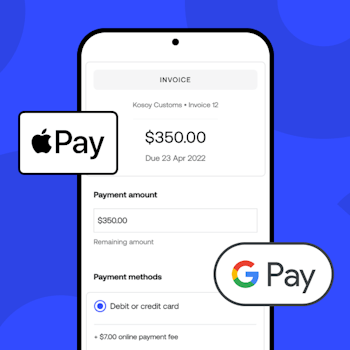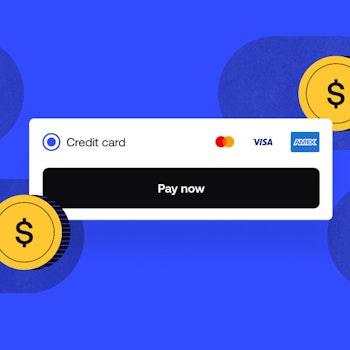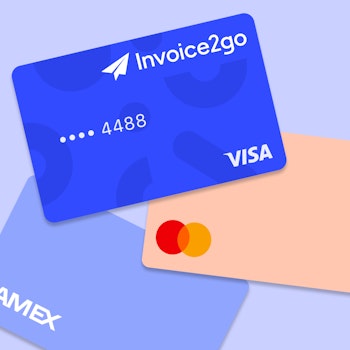
The ultimate guide to US government aid available for self-employed people during the COVID-19 pandemic
The current pandemic is affecting everyone – in every market, every industry and in every country. It doesn’t discriminate across any population, income bracket, or race.
Ironically, while many small businesses may not survive this economic crisis, as a self-employed or newly self-employed person, you may be one of the fortunate individuals looking at an increase in business — as some small businesses and businesses-of-one flourish during an economic downturn.
For example, delivery services are seeing a huge boost as customers are turning to home deliveries and ordering everything from restaurant meals to groceries online while they follow stay-at-home orders from their state government. Work-from-home freelancers — especially in communications or e-commerce — may see a burst in work available as businesses across the country need to send out messages regarding the crisis and/or upgrade their online presence.
While no one knows what will happen in the future, it is predicted that the balance of the states will follow stay-at-home orders and only allow essential businesses to remain open. Additionally, the overall mandate and response across the US has been to cancel every type of in-person event for groups larger than a half dozen or more individuals – or to move them online, like school classes, church services, and other types of essential gatherings.
As a result, small, independent businesses – everything imaginable from coffee shops to hairdressers – are struggling to stay afloat. Where it’s possible, they’re shifting their business models. Restaurants are offering pre-made carry-out packages of traditionally dine-in items along with standard counter “to-go” services. Yoga studios are offering classes via Zoom as opposed to in the studio. Even with these shifts, business is down considerably.
The decrease in business also has an immediate impact on self-employed and gig workers whose line of work may have catered to elective home services, such as interior designers and carpet cleaners — as many customers are waiting until the virus has dissipated before having others inside the home unnecessarily.
Help is available for freelancers and small business owners
We get it. The day-to-day demands of finding work can be tough enough without a pandemic and economic downturn. With the current COVID-19 situation, they may simply seem overwhelming.
As the economy surges or wanes, you likely know how to adjust things to compensate under normal circumstances. For many small businesses, simply covering your expenses, seeing a little growth, and doing something you like along with good people defines success. A sudden halt in business and a significant drop in revenue, however, is a different story – especially if you have employees being sent home or let go due to lack of business.
To help offset the economic strain brought on by the pandemic, the US government has developed emergency relief packages designed to help businesses, including self-employed individuals and gig workers — and they will likely affect you.
Here are the five efforts that the government is putting into place to provide some immediate and much-needed relief and support.
1. The CARES Act
The government recently passed a $2 trillion coronavirus stimulus bill, called the Coronavirus Aid Relief and Economic Security Act (CARES Act). This act is designed to:
Provide $1,200 checks to qualified individuals
Create a $367 billion loan program for small businesses
Establish a $500 million lending fund for cities, states, and industries.
The CARES Act is a huge win for gig workers, independent contractors, and self-employed individuals as it extends unemployment benefits – especially to many who were previously ineligible. Called Pandemic Unemployment Assistance (PUA), this assistance is separate from the existing state unemployment insurance system. Because of this, it may create challenges as some states may need implementation guidance from federal officials. Most states are hoping this guidance will come shortly.
The act offers benefits to previously ineligible groups, including self-employed professionals, independent contractors, and gig workers – if their unemployment was related to the current outbreak. These workers are eligible to receive half their state’s average weekly unemployment benefit plus $600 a week for up to four months. It will also extend existing state unemployment benefits by an additional 13 weeks.
For individuals who are still employed, including the self-employed, the CARES Act provides cash payments of up to $1,200 per person (up to $2,400 per couple) and $500 per child under 18. Individuals who earned more than $75,000 in 2018 will receive a lesser amount. And those without a federal tax liability will receive $600 under this proposal.
Note: This program is still being set up in some states, so the best way to learn more and apply is to visit your state’s unemployment website. Also, his application process is more complicated than regular unemployment and you may need to be tenacious to get it. You will need to provide documentation – like tax returns and invoices – to show how much you’ve been paid per month in the past.
2. Economic Injury Disaster Loans (EIDL)
Your employees, contractors, vendors, rent, and other bills all still must be paid. Under normal conditions, if you saw a sudden drop in business and your efforts at adjusting for the loss weren’t enough, you might turn to a traditional bank loan to help make ends meet until business picks back up.
But these are extraordinary times that are affecting everyone. Taking on a potentially high-interest rate loan is simply not a good option right now with so much uncertainty – especially if you’re not certain if you can pay it back promptly.
Fortunately, the government is now providing millions of dollars in additional funding called Economic Injury Disaster Loans. Guaranteed by the Small Business Administration (SBA), they provide the following relief:
Low-interest rate loans: 3.75% for businesses and 2.75% for non-profit organizations
Long-term repayment plans: Up to a maximum of 30 years
These loans are specifically meant to help if you are self-employed, an independent contractor, a small business, a non-profit, or an organization with fewer than 500 employees. They are designed to cover:
Payroll expenses
Fixed debts
Accounts payable
The loan will provide you with an amount equivalent to eight weeks of your prior average payroll (or earnings, for the self-employed) – plus an additional 25 percent of this sum. You don’t need to make any payments on the loan for up to six months.
And the best part is if you keep your entire workforce – or bring back those who were laid off – the government will entirely forgive the portion of the loan that you spent on payroll, benefits, rent, or other business expenses – which could equal the entire loan amount.
This program is generous because it isn’t structured like a typical loan. This is made possible in part because our national banking infrastructure is more stable and robust than any individual state’s financial capacity. Therefore, it’s more practical to have private banks issue government-guaranteed loans as the need is immediate. For more information, visit the SBA website.
The only foreseeable negative to these Economic Injury Disaster Loans is the $349 billion that has been allocated for it – as there is a risk it will be quickly exhausted. If this is the case, or if you find that your business doesn’t qualify for this loan, federal and state financial regulators have encouraged financial institutions to work constructively with affected consumers.
In addition to the Economic Injury Disaster Loans, you can also apply – assuming you have less than 500 employees – for forgivable loans under the Paycheck Protection Program. For these loans, you go through a bank or an online service like BlueVine. You can borrow up to $10 million, but the amount available is subject to a formula based on 2.5 times your payroll expenses.
Once borrowed, the loans are due in two years and have a 1% interest rate. However, a significant portion of these loans – the amount spent on payroll, utilities, and rent over an eight-week period – may be forgivable. All the rules are here. A sample loan application is here, and a great loan calculator is here.
3. The Families First Coronavirus Response Act
Traditionally, business tax credits directly lower a business’s tax liability, dollar-for-dollar. The government recently signed into law a significant tax credit called the Families First Coronavirus Response Act. It provides federally mandated benefits and requires certain employers to provide their employees with paid sick leave or expanded family and medical leave for specified reasons related to COVID-19.
With the relief package, employers with eligible employees must provide:
Paid sick leave to employees for 14 days, at their regular rate of pay (max $511/day), in addition to any paid sick leave they already offer employees
Paid leave to qualifying employees for three months
The new legislation provides a business tax credit equal to 100% of the benefits paid out. It is designed to offset these costs and help alleviate these financial burdens to employers. If you are self-employed or a gig worker, you can also claim this tax credit if you already allocate paid sick leave for yourself.
As an added benefit, employers who are required to provide paid sick and paid leave benefits do not have to pay the employer Social Security tax on those wages.
4. Tax Deadline Extensions
Along with available loans, government cash payments, and tax credits, another form of financial relief for businesses comes in the form of tax deadline postponements. This includes a federal income tax deferment for employers as well as a possible Social Security payroll tax deferment.
If you don’t participate in the Paycheck Protection Program, you can claim a refundable (that means cash back) tax credit of up to $5,000 per employee per quarter against your payroll taxes due that quarter, assuming your business was shut down or suffered more than a 50 percent revenue decline as a result of the Coronavirus.
The new deadline for filing federal tax returns and paying taxes is now July 15. Corporations have an estimated tax payment postponement until October 15. States have also implemented tax filing and payment guidelines, so check your state’s government website to find out details regarding their specific deadlines.
5. State Relief and Corporate Grants
States and cities such as Florida, Los Angeles, and Chicago have set up or adjusted existing relief funds and loans for local small companies. Definitely take the time to check with your state and city’s website to see if grants or loans are available.
Many corporations and non-profits are also offering hundreds of millions of dollars in grants and loans for small businesses. Among them are Facebook, JP Morgan Chase, Verizon, and The Opportunity Fund. Some companies, like Zoom, PandaDoc, and Microsoft are offering discounted or free services.
Finally, many banks, including PNC, Santander, and TD Bank are waiving fees and providing payment deferrals and other relief for their small business customers. None of this cash replaces actual revenues from actual customers. But it does help – in a big way.
Finally, here are three ideas to encourage you
Even though you never could have anticipated this pandemic and economic free fall, there are some things that you can do now – especially if you have holes in your normally busy schedule and free time to be creative.
Offer new services
Have you been thinking of expanding your business with a new service or product line? Now might be the time to explore and experiment with those ideas. For example, a high-end restaurateur in New York City has, like all others, been forced to close his doors to dine-in patrons. To compensate, he has turned his location into a make-shift farmer’s market.
Although he has had to let a few of his regular staff go, those he is retaining are now helping sell everything from fresh produce to freshly baked bread and small entrees. While many of his loyal customers are happy to still give him their business, this idea is also keeping his distributors active.
Help others
If you’re like many, your employees – even contractors – are like family. Letting them go due to a sudden drop in business is probably one of the hardest things imaginable. If possible, use whatever means your business can provide to help them. For example, even though the owner of a diner in Boston had to let his entire staff go, he’s still cooking – for them.
Every day, he cooks meals and puts them in to-go containers. His former employees stop by to pick up the prepared food – and catch up with him. In addition to this, many small businesses are lending their products and services to places such as food pantries and groups that are providing meals to school children who are now suddenly without this daily benefit.
Use the time to learn and grow
Do you have paperwork that you have been putting off? A file drawer that needs reorganizing? Or, are there areas of your physical business that need a good cleaning? Now is the perfect time to clean up and get buttoned-up. Plus, this will feel like you are doing something positive for your business – because you are.
At Invoice2go, a Bill.com company, we’re investing in developing tools and resources through articles like this — written by experts and provided to you for free — to help you optimize your downtime and upgrade your business for when the economy gets cranking again.
You can even join our new Self-Employed Facebook Group, Family-owned Business Group, or Construction Industry Facebook Group to connect with others and enjoy even more tools and resources for free.
No one expected this pandemic to have such a rippling and damaging effect on our economy. And no one knows when it will finally end – but it will. Hopefully, the measures being put into place will help along with additional aid and relief that are just now being discussed.
For now, focus on one day at a time, seek out the help that is being made available to you, and find ways to remain positive, knowing that we are all in this together.
Editor’s note: At Invoice2go, we make every effort to bring you the most current information that’s both relevant and helpful to you and your business. As the COVID-19 pandemic is still unfolding, please check back for updated articles. Thank you.
Related Articles

How to accept credit card payments on Invoice2go in 3 simple steps

Accept payments online via Apple Pay and Google Pay

Must-not-miss write-offs as you wrap up 2022 year-end finances

5 ways accepting credit and debit card payments helps your business stay resilient

4 easy ways to increase cash flow today

What is Small Business Saturday and why is it important?
The features and surprising benefits of a well-designed packing slip
